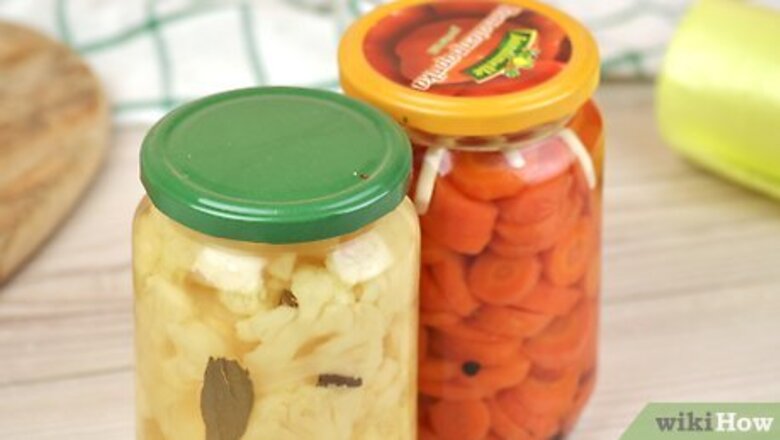
views
Putting Sealed Jars in the Trash
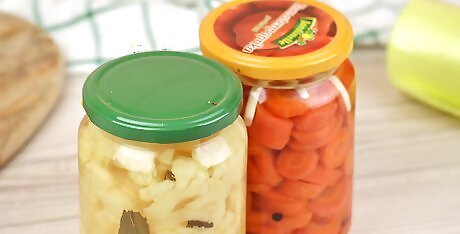
Keep the jars sealed if you think they are spoiled. If you find your old jars of food and they look swollen or moldy, don’t open them up. Keep them sealed until you can dispose of them properly. Botulism, the formation of bacteria in old jars of food, can be deadly. If you suspect that your food is contaminated, you should not eat it or open it up. You can tell canned food has gone bad by looking for air bubbles and an unnatural color.
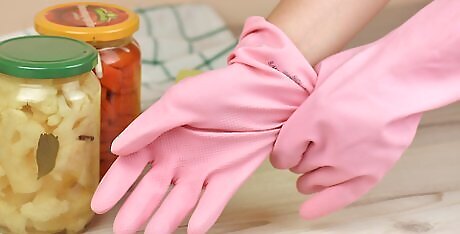
Put on rubber or nitrile gloves. The bacteria that forms in old canned or jarred food can be dangerous even when it comes into contact with your skin. Protect your hands with rubber, nitrile, or latex gloves before you start the cleaning process. The bacteria that forms inside of canned food is called botulism, and it can cause vomiting, diarrhea, and even death.
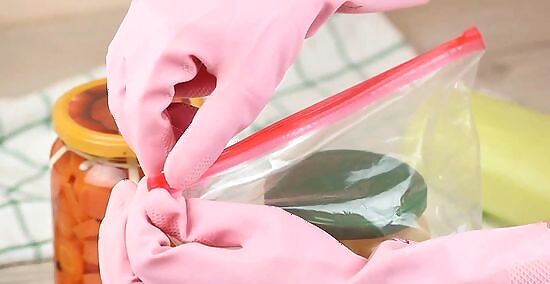
Put the jars inside a plastic bag with a seal. Grab all of your jars and place them inside of a plastic bag that can be sealed. Secure the bag tightly at the top to ensure the jars don’t leak. If you need to, use a few plastic bags so all of your jars fit.
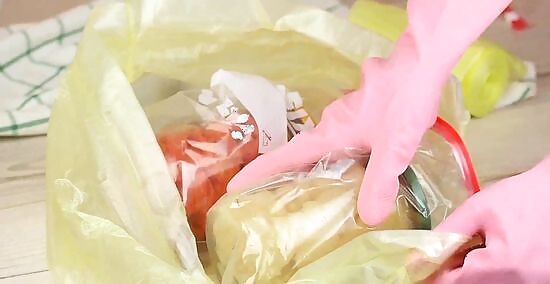
Place the bag of jars in a heavy garbage bag. Grab the most heavy duty garbage bag you can find and gently place the jars into it. If you have more than 1 jar, you may need to double bag or use multiple bags to avoid cracking the glass jars. Keep the jars in the sealed plastic bag the entire time. Unfortunately, you won’t be able to reuse the jars. However, glass jars are relatively cheap, and it’s worth avoiding the potential contamination of new food.
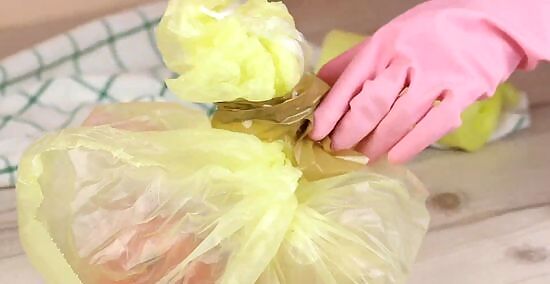
Tape the garbage bag shut. Wrap the top of the garbage bag up and tie it in a knot. Then, use masking or packing tape to secure the top of the garbage bag to make sure none of the jars can leak out in the trash. Botulism can affect any living organism, including animals, so it’s important to keep it contained.
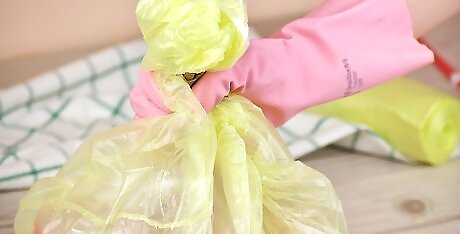
Throw the bag into the trash. Gently set the trash bag into your garbage can and wait for curbside pickup, if you have it. If you don’t, you can drop the bags off at a landfill instead. Unfortunately, the jars can’t be recycled. Make sure your trash container is out of the reach of animals and pets to avoid making them sick.
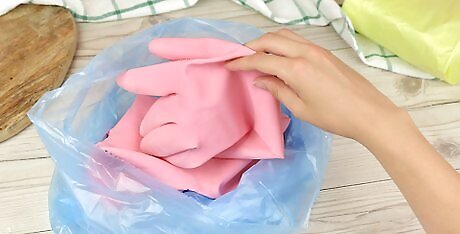
Throw away your gloves and wash your hands. Peel your gloves off and throw them into a lined trash can, then use soap and water to scrub your hands. Wash them for at least 20 seconds, then rinse with hot water and dry off with a towel. Even if you didn’t come into contact with the food, it’s better to be safe.
Detoxifying Leaking Jars
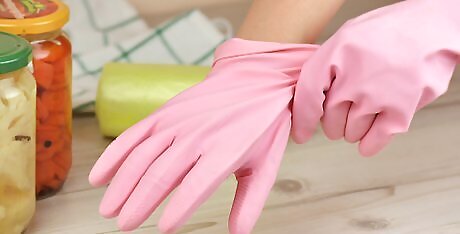
Put on gloves to protect your hands. Grab a pair of rubber, nitrile, or latex gloves to protect your hands. The bacteria that creates botulism can be dangerous even if it just barely touches your skin, so you need to protect yourself throughout this process. Make sure you are okay with throwing away your gloves after you’re done cleaning.
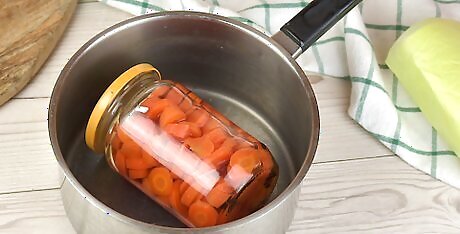
Lay all the jars on their sides in a pot. Grab a large pot that can fit all of your jars inside of it. Lay the jars side by side in the pot, keeping the lids on. If you need to, grab a second pot so all of your jars can fit in a single layer. If any food spills out, try not to touch it.
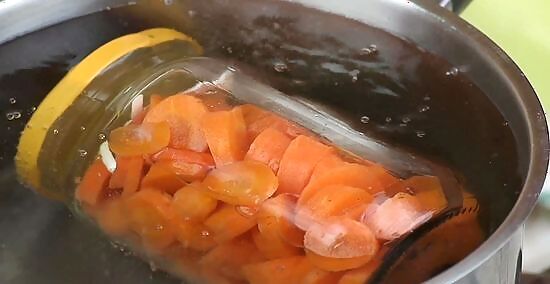
Fill the pot with water and bring it to a boil. Use enough water to submerge the jars entirely, then place the pot on your stovetop. Turn the heat on high and wait until you see large bubbles rising to the top to know that it’s boiling. Boiling the water will kill the bacteria in the food, the jars, and the lids.
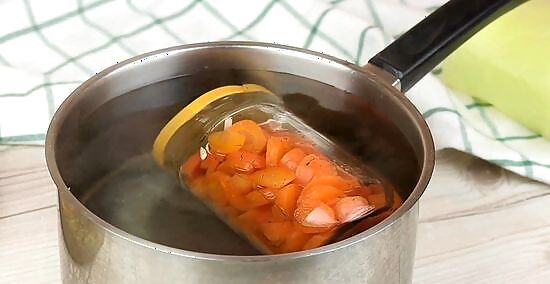
Boil the water for 30 minutes, then turn off the heat. Set a timer for about 30 minutes and leave your pot uncovered. Once 30 minutes is up, turn the heat off but leave the pot on the stove.
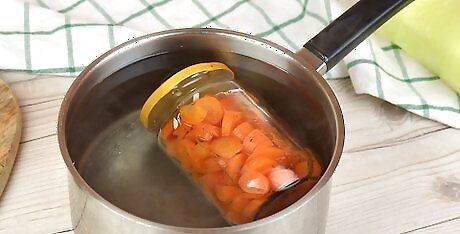
Allow the water to cool to room temperature. Keep the jars and lids in the pot and let it sit for another 30 minutes, or until the water has cooled down. That way, you can handle the contents safely without burning yourself.
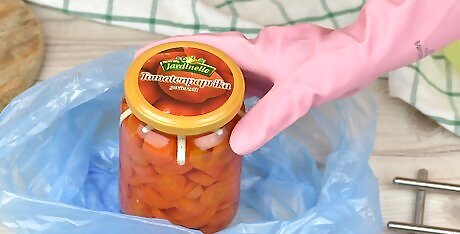
Throw the jars, the lids, and any food waste in the trash. Unfortunately, you can’t keep any of the jars or the lids that you just boiled. Place the lids, the jars, and the food waste in a large garbage bag, then tie it up tightly. Put the garbage bag into a trash can, not the recycling. Even though you boiled the jars, there could still be some bacteria left on them. It’s better to get rid of them than risk getting sick. You can also throw your gloves in the trash once you’re done.
Spraying Bleach on Spilled Food
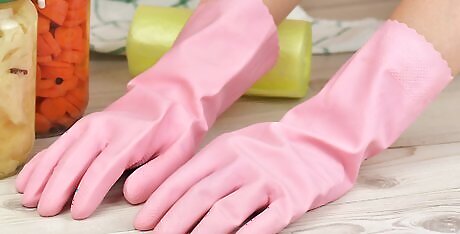
Put on gloves to protect your hands. Bleach, even when it’s diluted, can cause skin irritation. Put on some latex, nitrile, or rubber gloves to keep your hands protected before you start working with bleach. Bleach can also stain clothes, so make sure you’re wearing something you don’t mind getting stained. If you spilled a lot of food, consider wearing a mask to avoid inhaling the botulism bacteria.
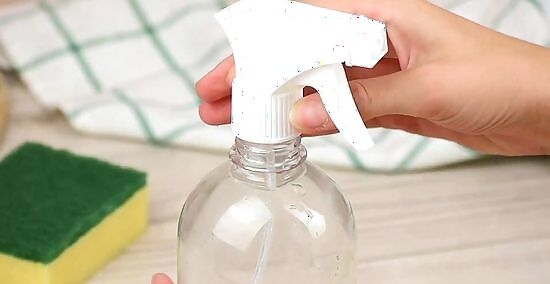
Mix ⁄4 c (59 mL) of bleach with 2 c (470 mL) of water. In a spray bottle, mix together some water and bleach to create a diluted mixture. Bleach on its own is too strong, which is why you have to add water to it. You can find empty plastic spray bottles at most home goods stores.
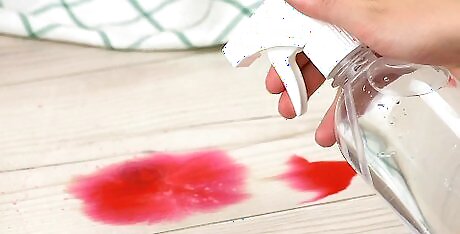
Spray the bleach mixture onto the spill, then wait 30 minutes. Completely cover the spill with the bleach mixture, then set a timer for 30 minutes. The bleach will work to kill any bacteria that could be left on your countertop, floor, or table as you wait. Bleach can stain soft surfaces, like carpets, towels, and clothes, so keep it away from those areas.
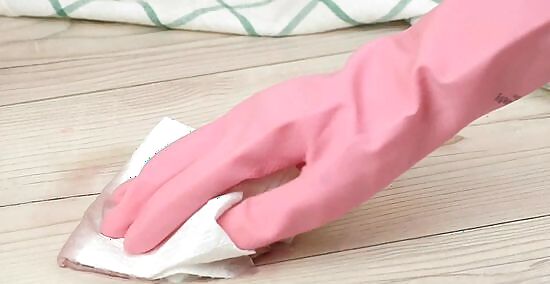
Wipe the bleach with paper towels. Keeping your gloves on, grab a roll of paper towels and carefully wipe up the bleach. Immediately throw the paper towels into a trash can as soon as you’re done. If there are any areas you notice that didn’t get bleach on them, spray the mixture again and wait another 30 minutes before wiping it up. If there are any chunks of food, you can pick those up with the paper towels and put them in the trash.
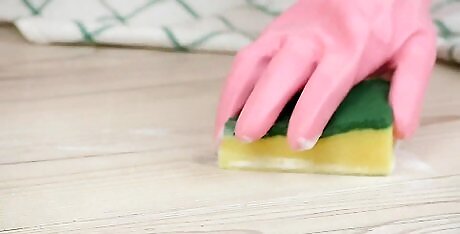
Wash the entire area with soap and water. For a final clean, spray down the area of the spill with water and use dish soap and a sponge to wipe it up. Use a clean, dry towel to wipe off the area once you’re done. The soap is a last defense against any bacteria that may still be lingering.
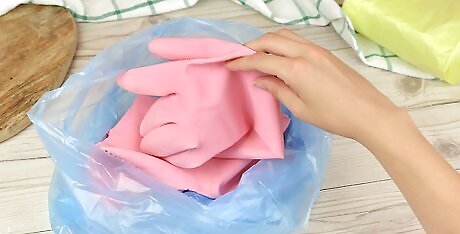
Throw away your gloves and wash your hands. Peel off your gloves without touching the outsides with your fingers and throw them away in the trash. Wash your hands with soap and water for at least 20 seconds, making sure to scrub your palms, fingers, and the tops of your hands. You probably didn’t touch any of the spilled food, but it’s better to be safe and wash your hands each time.




















Comments
0 comment